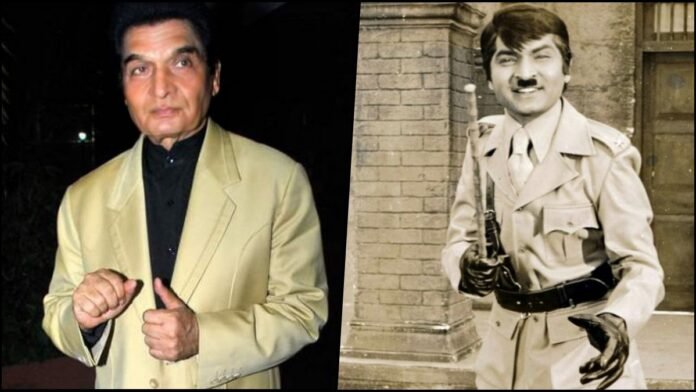
Key Points
- Veteran actor Govardhan Asrani died on October 20, 2025, at age 84 due to respiratory complications and fluid accumulation in lungs
- Last rites performed privately at Santacruz crematorium on Diwali evening, honoring his final wish for a quiet departure
- Survived by wife Manju Asrani (former 1970s actress), sister, and nephew; couple had no children
- Five-decade career spanning 350+ films, with iconic jailer role in “Sholay” (1975) remaining his most memorable performance
- Estimated net worth of ₹48 crore, including Mumbai property holdings
Mumbai: The Hindi film industry mourns the loss of one of its most beloved comedians, Govardhan Asrani, who passed away on October 20, 2025, at the age of 84. The veteran actor, immortalized by his portrayal of the eccentric jailer in “Sholay,” breathed his last at Bharatiya Arogya Nidhi Hospital in Juhu, Mumbai, leaving behind a legacy of laughter spanning over five decades.
Medical Emergency and Final Hours
Asrani was admitted to the hospital after experiencing severe breathing difficulties. His manager, Babubhai Thiba, confirmed to PTI that doctors diagnosed fluid accumulation in his lungs, which led to respiratory failure. The actor passed away around 3:00 pm on Sunday, with his condition deteriorating rapidly despite medical intervention.
A Private Farewell on Diwali
In an unusual turn of events that surprised many in the film fraternity, Asrani’s last rites were conducted quietly at Santacruz crematorium at 8:00 pm on Diwali evening. Babubhai revealed that this discretion was the actor’s explicit final wish. Asrani had instructed his wife Manju that he wanted no public announcement of his death and desired a peaceful departure without fanfare. The family honored this request, keeping the funeral ceremony intimate and away from media glare.
The Journey from Jaipur to Stardom
Born into a middle-class Sindhi Hindu family in Jaipur, Rajasthan, Asrani attended St. Xavier’s School before graduating from Rajasthan College. To support his education, he worked as a voice artist at All India Radio, Jaipur, demonstrating early signs of the vocal talent that would later define his comic timing.
His formal training at the prestigious Film and Television Institute of India (FTII) in Pune during the 1960s laid the foundation for his illustrious career. Making his Bollywood debut in 1967 with “Hari Kaanch Ki Chudiyan,” Asrani went on to appear in over 350 films during his 58-year career, establishing himself as one of Hindi cinema’s most versatile character actors.
The Iconic Jailer Who Defined a Generation
While Asrani excelled in various roles, his portrayal of the bumbling, Hitler-obsessed jailer in Ramesh Sippy’s 1975 blockbuster “Sholay” remains etched in Indian cinema history. His famous line, “Hum Angrezne ke zamaane ke jailer hain,” delivered with impeccable comic timing, became part of popular culture. The character, reportedly inspired by Charlie Chaplin’s role in “The Great Dictator,” showcased Asrani’s ability to blend physical comedy with nuanced performance.
Beyond Comedy
Contrary to popular perception, Asrani was not confined to comedic roles. He delivered powerful performances in serious films like “Namak Haram,” “Bawarchi,” “Guddi,” “Abhimaan,” and “Chupke Chupke.” His versatility allowed him to seamlessly transition between genres, whether playing supporting roles or leading man.
In films like “Chhoti Si Baat” and later in “Bhool Bhulaiyaa,” he demonstrated that his humor possessed emotional depth, resonating with audiences across generations. His work in modern comedies including “Hera Pheri,” “Halchal,” “Deewane Huye Paagal,” and “Welcome” proved his ability to adapt to contemporary filmmaking styles.
The Man Behind the Camera
Asrani also ventured into direction and production, helming films like “Aaj Ki Taaza Khabar” and “Chala Murari Hero Banne.” These projects showcased his understanding of cinema beyond performance, though his acting remained his primary claim to fame.
A Love Story in Cinema
Asrani’s personal life was intertwined with his professional journey. He met Manju Bansal, a popular actress of the 1970s, while working on films like “Aaj Ki Taaza Khabar” and “Namak Haram.” Their on-screen chemistry blossomed into real-life romance, leading to marriage. The couple continued collaborating professionally, appearing together in “Chandi Sona,” “Tapasya,” “Jurmana,” “Sarkari Mehman,” and “Chor Sipahi.”
Manju Asrani retired from acting in the 1980s, though she briefly directed films in the 1990s before stepping away from public life entirely. The couple chose not to have children, and their family circle remained small, consisting of Asrani’s sister and nephew.
Financial Legacy
Asrani’s successful career brought not just acclaim but significant financial prosperity. According to industry sources, his net worth at the time of his passing was estimated at ₹48 crore, including valuable property holdings in Mumbai. This wealth, accumulated through decades of consistent work across acting, direction, and production, now passes to his wife Manju and remaining family members.
Industry Reactions
As news of his passing spread on October 21, tributes poured in from across the film industry. Colleagues and younger actors alike remembered Asrani as a consummate professional whose dedication to his craft never wavered. His ability to make multiple generations laugh, from the 1970s through the 2000s, marked him as a rare talent whose work transcended time.
The timing of his death on Diwali adds poignancy to the loss, as the festival of lights now carries a shadow for those who cherished his contributions to Indian cinema. His widow Manju Asrani now faces life without her partner of several decades, supported only by extended family.
Govardhan Asrani’s passing marks the end of an era in Hindi cinema, closing a chapter on the golden age of character actors who could elevate any film with their presence. His legacy lives on through hundreds of films that continue to entertain audiences, ensuring that the jailer from “Sholay” will never truly leave our screens.














































![Bros | Official Trailer [HD]](https://palpalnewshub.com/wp-content/uploads/2023/01/1674731021_maxresdefault-150x84.jpg)



